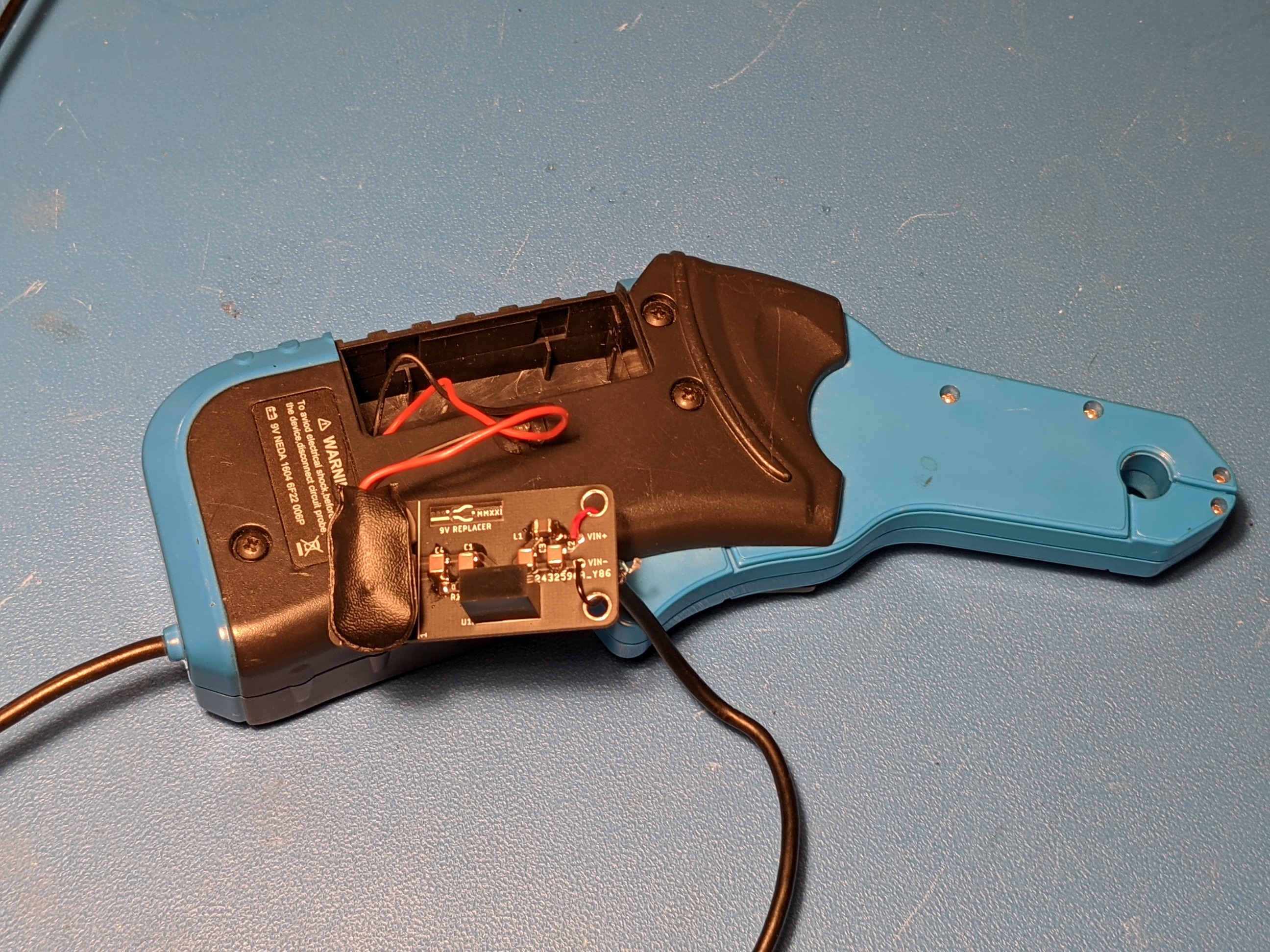9V Replacer
2021
Both Fluke and Hantek have 20kHz clamp current probes (80i-110s and CC-65 respectivey) that eat 9V batteries—not because they are particularly power hungy, but because it is easy to leave them on by accident. For work projects, I just grab another battery from the supply cabinet. But for projects at home, I got tired of having to buy 9V batteries, so I made a simple circuit to take 5V USB power from my oscilloscope and convert it to 9V for my current probe.

Current Probe Powered by Oscilloscope USB Port
Circuit
This current probe is bidirectional and needs to drive both positive and negative signals to the oscilloscope. Since they only have a single 9V battery as a power supply, they operate with a virtual ground at the midrail of the power supply. Since the battery is entirely seperate from the ground of the oscilloscope, you can connect this midrail node as ground and the scope will see a signal below midrail as a negative signal. Because of this, it is necessary to use an isolated power supply for the current probe. If a linear regulator or buck converter were used, the midrail supply would be shorted to ground and the circuit would not work as intended.
9V Battery Eliminator Schematic
CUI has a nice series of SIP (Single In-line Package) 1.5kV isolated DC-DC converters with many input/output options. For this application, I selected PDSE1-S5-S9-S since it takes 5V in and generates 9V out. The actual circuit board is trivially simple—it just provides input and output filtering, a place to solder the USB cable and a place to solder the 9V connector. I made the board the same general size as a 9V battery to keep it from moving around too much inside the battery compartment and used a through hole mounted 9V battery snap connector to mate with the battery cable. These connectors are the same on the cable as on the battery itself, and in a pinch you can take apart an old 9V and extract its connector.

Assembled Board
This was probably not necessary, but I included an LC Pi filter at the input to the power suply to limit conducted noise in the USB cable; I haven't noticed any difference in the performance of the current probe when powered by a battery and by this battery replacer.
Result
After cutting a small notch in the battery compartment lid to pass the USB cable though and wiring the USB cable into the board using the outer mounting holes for strain relief, everything closed up nicely.

Open Battery Compartment

Closed Battery Compartment